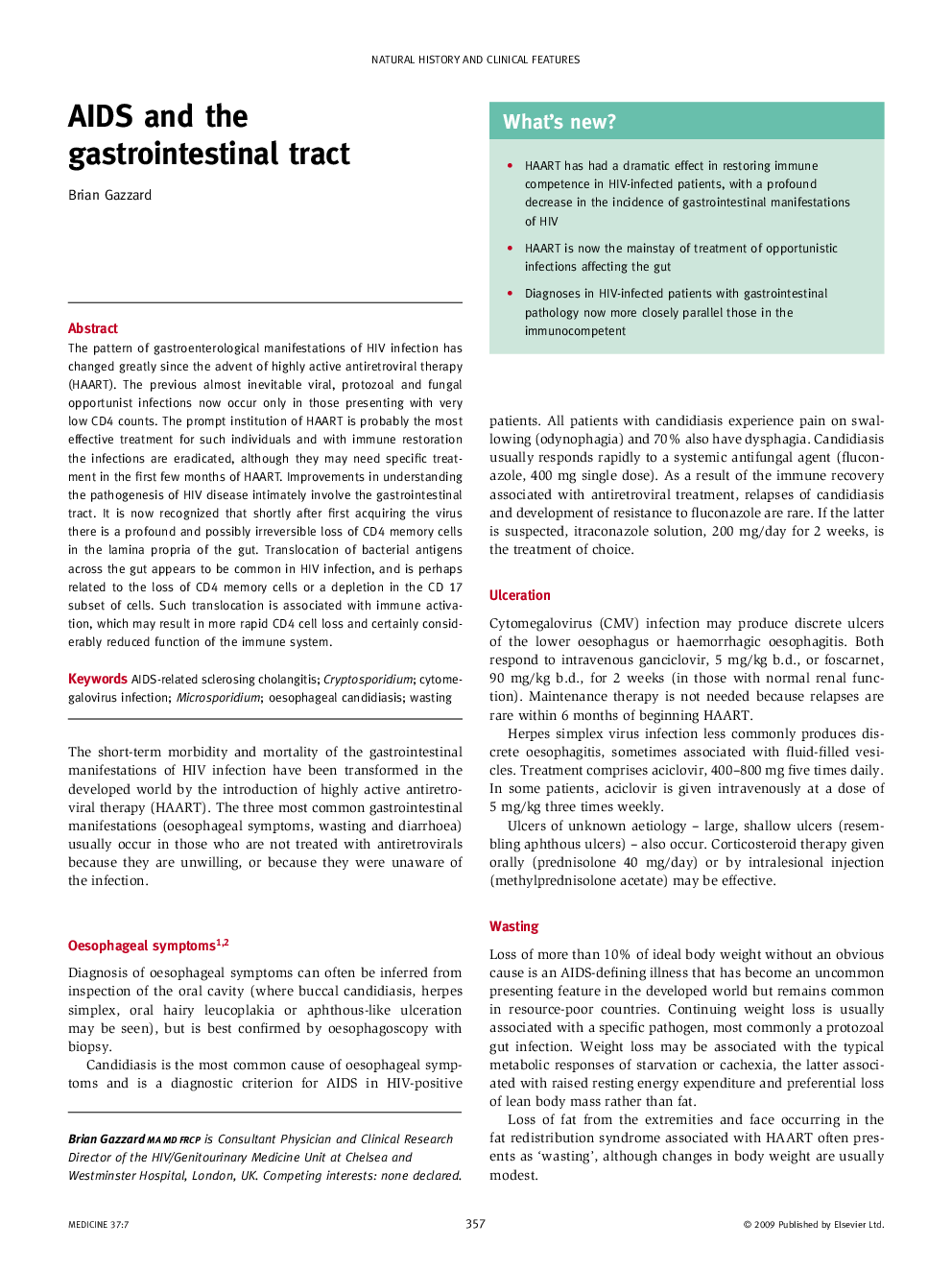| Article ID | Journal | Published Year | Pages | File Type |
|---|---|---|---|---|
| 3805372 | Medicine | 2009 | 4 Pages |
Abstract
The pattern of gastroenterological manifestations of HIV infection has changed greatly since the advent of highly active antiretroviral therapy (HAART). The previous almost inevitable viral, protozoal and fungal opportunist infections now occur only in those presenting with very low CD4 counts. The prompt institution of HAART is probably the most effective treatment for such individuals and with immune restoration the infections are eradicated, although they may need specific treatment in the first few months of HAART. Improvements in understanding the pathogenesis of HIV disease intimately involve the gastrointestinal tract. It is now recognized that shortly after first acquiring the virus there is a profound and possibly irreversible loss of CD4 memory cells in the lamina propria of the gut. Translocation of bacterial antigens across the gut appears to be common in HIV infection, and is perhaps related to the loss of CD4 memory cells or a depletion in the CD 17 subset of cells. Such translocation is associated with immune activation, which may result in more rapid CD4 cell loss and certainly considerably reduced function of the immune system.
Related Topics
Health Sciences
Medicine and Dentistry
Medicine and Dentistry (General)
Authors
Brian Gazzard,
